What is an induction hob — the science behind them and how they work
We've all heard of them but just what is an induction hob and is it the right choice for you? Here, we take a look at how they work and their pros and cons
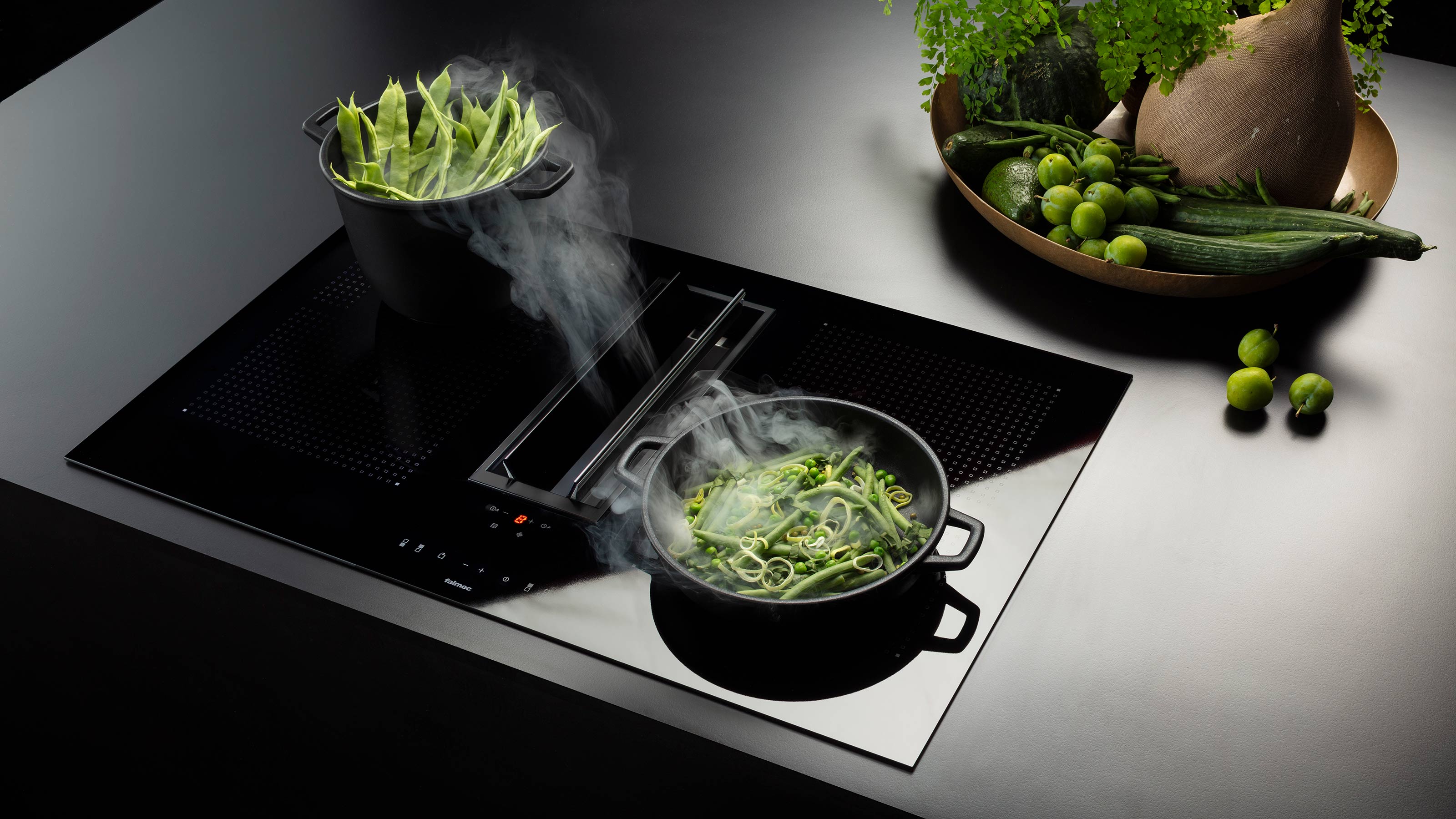
Exactly what is an induction hob and what could one offer you? In the ever-evolving world of kitchen appliances, this is one product that really has made life so much easier for many people, for lots of reasons.
Whether you are at the kitchen design phase of your project or are simply in the market for a new cooker or standalone hob, we are here to explain everything you need to know about induction hobs, including their benefits and downsides, how much they cost and how easy they are to use.
Before you begin your search, do be aware that just as with any type of hob, unless you are opting for a model that integrates extraction, it will be necessary to track down the right cooker hood to ensure you get maximum enjoyment from your new appliance.
What is an induction hob? The science bit...
In the world of ovens and hobs there is now so much choice, it can be hard to know where to begin.
Induction hobs are a form of electric hob that, although similar in appearance to some ceramic hobs, are actually quite different.
Induction hobs feature 'induction coils' that sit beneath the sleek glass surface of the hob. These coils are made from copper wire that, as electricity runs through them, create a high-frequency, alternating magnetic field. When a pan is placed on the hob, the magnetic field creates a reaction between the bottom of the pan and the cooking zone. This means that only the pot or pan heats up while the cooktop remains cool.
Induction hobs are usually controlled using touch-buttons to change the cooking zone and power level.
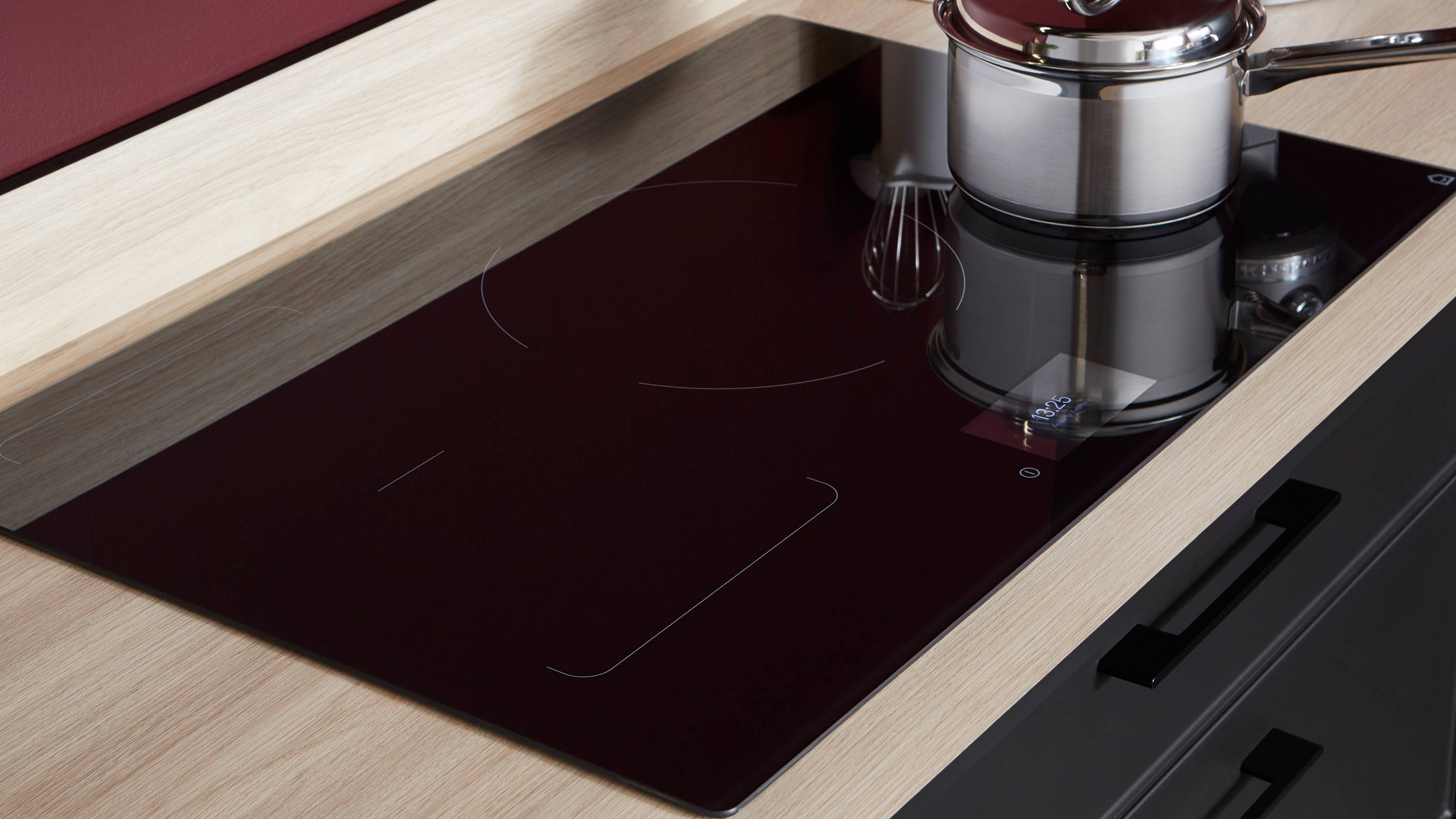
What pans can you use on an induction hob?
Induction hobs will not work with all pots and pans due to this magnetic field. You can only use pans with flat bases made from a ferrous (magnetic) metal — such as iron. Those made from copper, ceramic or aluminium will not work.
If you are unsure, you can check whether your pans are suitable by seeing if a magnet stick to their bases — if it does, it will work with an induction hob. Pans that are suitable for induction cooking are also now sold with a label saying they are or come with a coil symbol on the base.
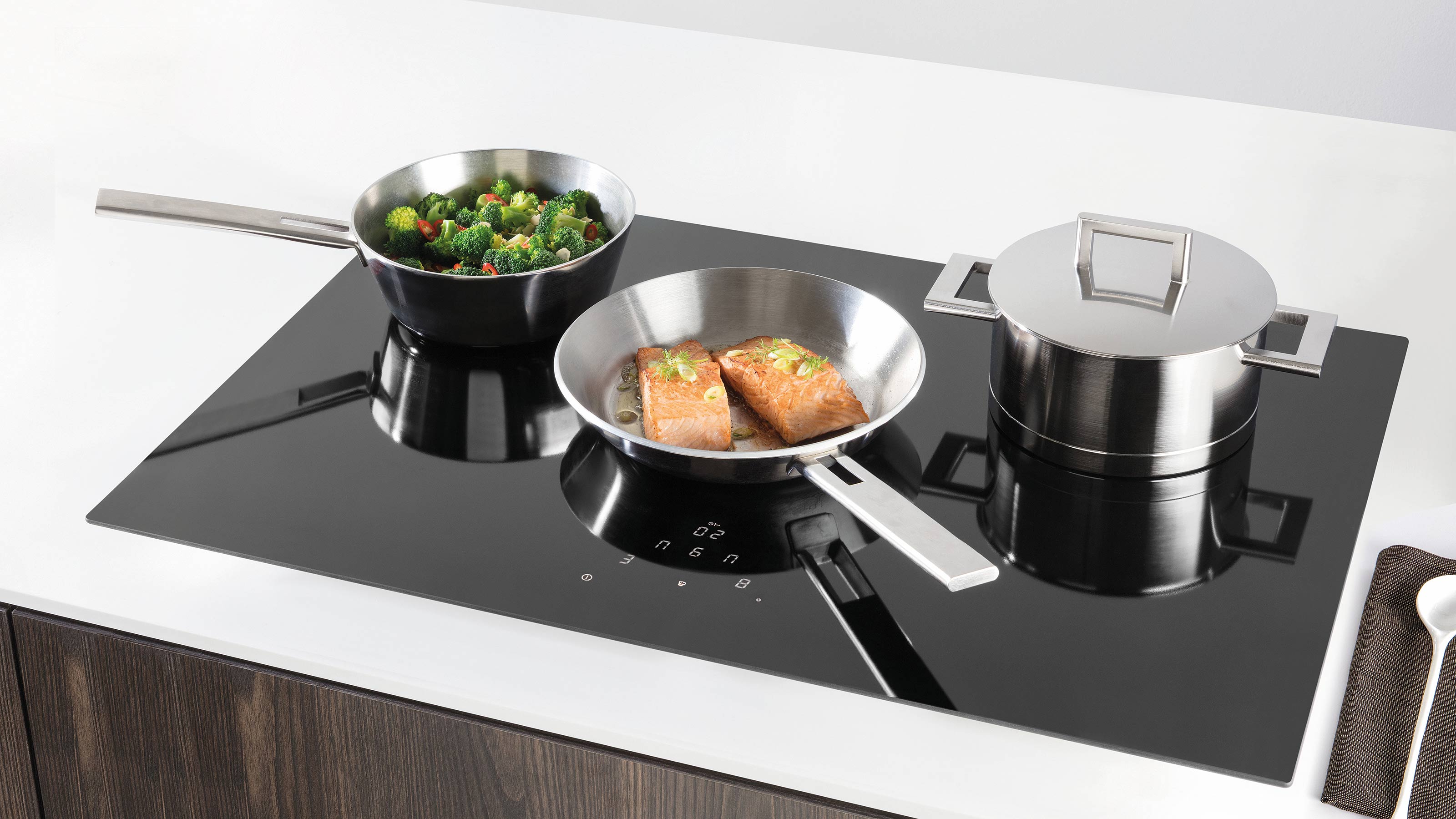
What are the advantages of induction hobs?
There are lots of reasons why induction hobs are a great purchase, including:
- Fast to heat up pans: Some can boil water in a pan in around one minute.
- Incredibly responsive: Unlike ceramic hobs, which take time to heat up and cool down, induction hobs respond immediately — no more boiling over to worry about.
- Energy efficient: As no heat is lost into the air around the pots and pans, induction hobs offer both energy and cost savings. Plus, cooking times are faster.
- Safer: Only the pots and pans get hot — not the hob. While there may be a little residual heat on the surface from the base of a pan, burns are less likely.
- Easy-to-clean: Unlike gas hobs and some ceramic models, the surface of induction hobs is super sleek with no crevices for food to become lodged.
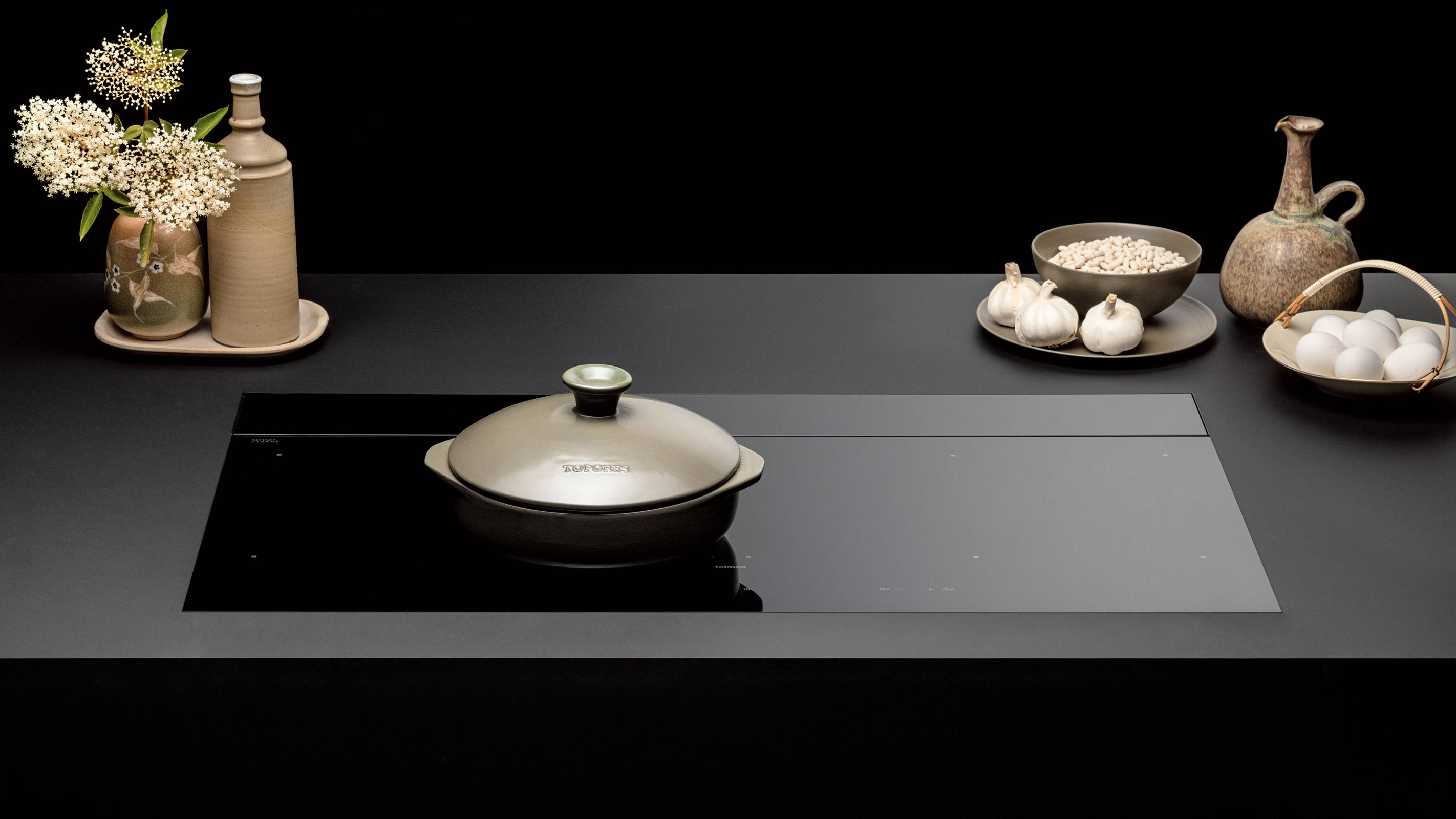
What are the disadvantages of induction hobs?
Of course, as with most things, there are a few disadvantages when it comes to induction hobs and it will be worth bearing these in mind.
- More expensive: Although they have come down in price since they first appeared on the scene, induction hobs are, in general, still more expensive than ceramic hobs.
- Not suitable for all pans: You might find you need to invest in a new set of pots and pans to cook on your induction hob.
- You may need to rethink how you cook: Remember, once you take the pan off the hob, it will cut off — so if you are prone to shaking and shimmying your pans around while cooking this could be frustrating. You also need to be sure to place the pans centrally on the hob ring for them to work.
- Some models are noisy: Some users report whirring or rattling sounds coming from their induction hobs — this is due to the energy being transferred from the coil to the pan.
- Can be prone to scratches: With their smooth glass tops, induction hobs can get scratched and damaged if pans are dragged over them, particularly if they have anything stuck to the bottom.
Ceramic hob vs induction
Ceramic hobs work much like the old-fashioned electric cooker hobs. They feature a heating element set beneath ceramic glass — this simply heats up (you can see it glowing red) and cools down accordingly.
When it comes to ceramic vs induction hob, ceramic takes longer to respond to temperature adjustments than induction and will stay hot after being switched off — although the better models are far speedier than the older, lower-quality designs. This can cause concerns for those with young children or who have cats who may jump up onto surfaces. Cloths left on the hob have also been known to catch fire.
On the plus side, ceramic hobs are cheaper to buy (although not run) than induction and can be used with any kind of pan.
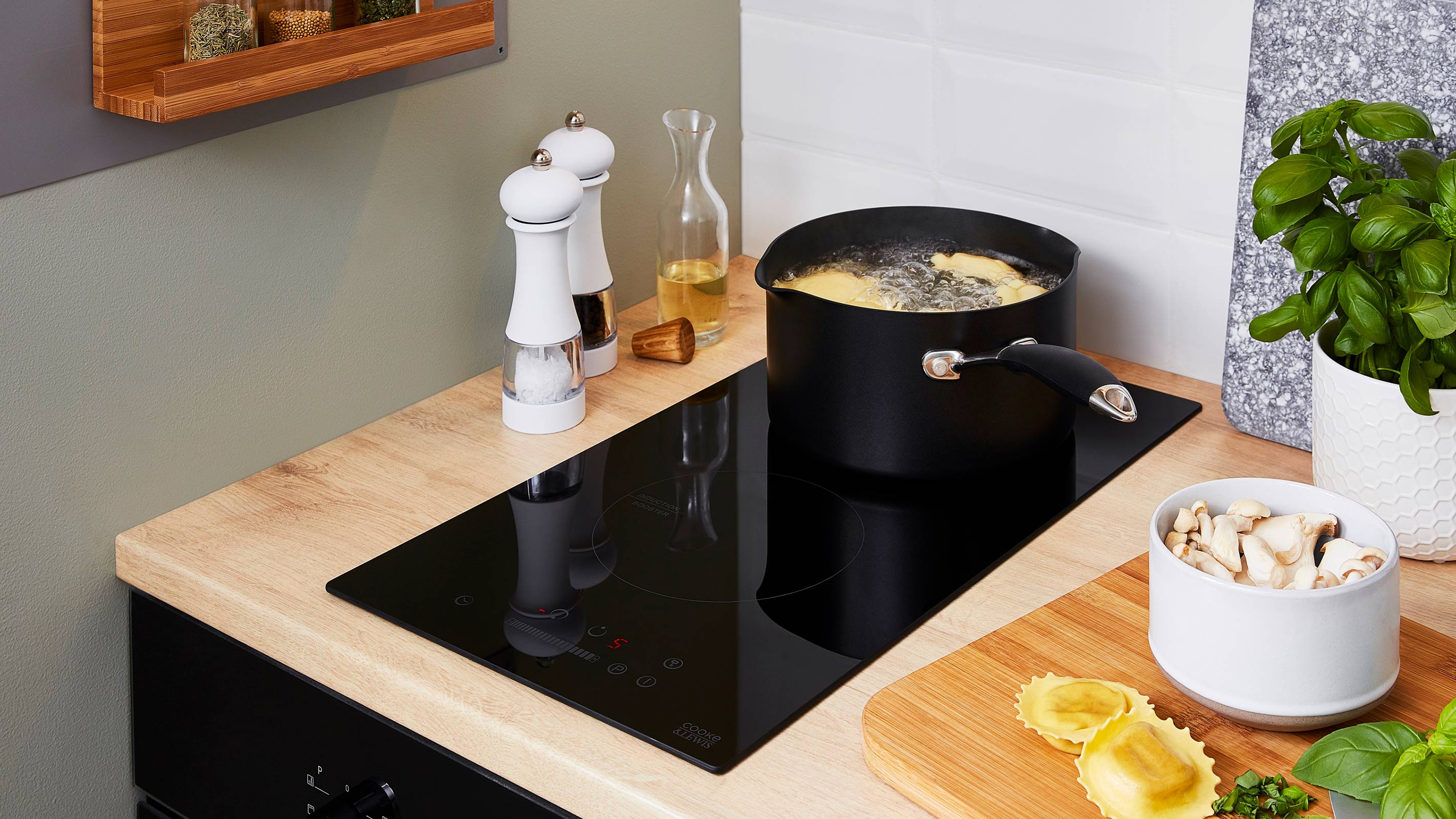
Are induction hobs expensive?
Induction hobs do cost more initially than ceramic or gas hobs. However, many people see this initial outlay as worthwhile due to the lower running costs they offer, as well as their many other benefits.
Although the energy consumption of induction hobs is usually higher than ceramic, the fact that they can be used for less time still makes them more energy and cost efficient to run.
At the cheaper end of the market, induction hobs such as the Bosch Series 2 PUG61RAA5B 60cm Induction Hob from John Lewis can be picked up for under £300, which is comparible to many ceramic hobs. Of course it is possible to spend much more than this – over £3,000 – depending on size and extra features.
If it is types of cooker you are looking for – as opposed to a separate hob – those with induction hobs, as opposed to ceramic, usually cost several hundreds of pounds more.
Get the Homebuilding & Renovating Newsletter
Bring your dream home to life with expert advice, how to guides and design inspiration. Sign up for our newsletter and get two free tickets to a Homebuilding & Renovating Show near you.
Natasha was Homebuilding & Renovating’s Associate Content Editor and was a member of the Homebuilding team for over two decades. In her role on Homebuilding & Renovating she imparted her knowledge on a wide range of renovation topics, from window condensation to renovating bathrooms, to removing walls and adding an extension. She continues to write for Homebuilding on these topics, and more. An experienced journalist and renovation expert, she also writes for a number of other homes titles, including Homes & Gardens and Ideal Homes. Over the years Natasha has renovated and carried out a side extension to a Victorian terrace. She is currently living in the rural Edwardian cottage she renovated and extended on a largely DIY basis, living on site for the duration of the project.

